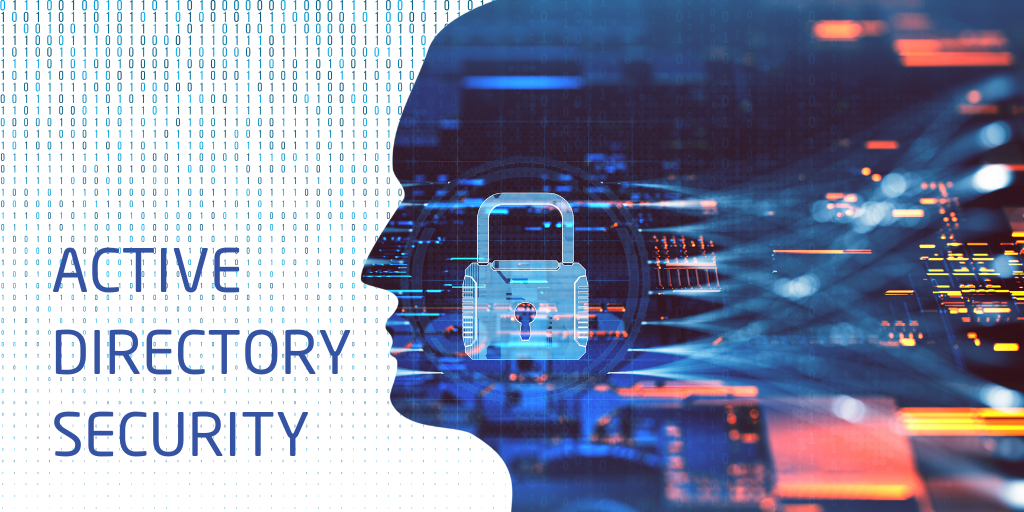Top Personal Cybersecurity Tools for Executives
In today's digital age, high-level executives in the financial services industry are prime targets for cyber attacks. Discover the top personal...
5 min read
.jpeg) Michael Markulec
:
Nov 5, 2024 1:06:24 PM
Michael Markulec
:
Nov 5, 2024 1:06:24 PM

As Cybersecurity Awareness Month comes to a close, the importance of cybersecurity in today's digital age cannot be overstated, especially for business leaders who make strategic decisions for their organizations.
Cyber threats are pervasive and constantly evolving in the modern business environment, presenting a complex and ever-changing challenge for organizations worldwide. These threats can manifest in numerous forms, each with unique characteristics and potential impact on business operations. Business leaders must have a firm grasp of cyber threats to safeguard their organizations effectively. Among the most common threats are malware, which refers to malicious software designed to disrupt, damage, or gain unauthorized access to computer systems; phishing, which involves fraudulent attempts to obtain sensitive information by disguising as a trustworthy entity in electronic communications; ransomware, a type of malware that encrypts a victim's files and demands payment for the decryption key; and advanced persistent threats (APTs), which are prolonged and targeted cyberattacks in which an intruder gains access to a network and remains undetected for an extended period. Understanding these threats in detail helps executives make informed decisions about the necessary protective measures, such as implementing robust security protocols, investing in advanced cybersecurity technologies, and fostering a culture of vigilance among employees.
Additionally, knowledge of the threat landscape extends beyond just recognizing the types of threats; it also includes awareness of the potential sources of these threats. Cybercriminals often operate in organized groups, are motivated by financial gain, and employ sophisticated techniques to breach security defenses. Nation-states may engage in cyber espionage or cyber warfare to achieve political or economic objectives, posing a significant threat to national and corporate security. Insider threats, which can arise from disgruntled employees or those who inadvertently compromise security, add another layer of complexity to the threat landscape. This comprehensive understanding of the nature and origin of cyber threats enables leaders to anticipate and mitigate risks more effectively, ensuring that their organizations remain resilient in the face of an increasingly hostile digital world. By staying informed and proactive, business leaders can better protect their assets, maintain trust with stakeholders, and secure their competitive position in the market.
Creating a culture of cybersecurity awareness within an organization is a multifaceted endeavor that begins with strong leadership from the top. Executives are pivotal in setting the tone and leading by example, demonstrating a commitment to cybersecurity throughout the organization. This leadership involves articulating the importance of cybersecurity and actively participating in initiatives that highlight its significance to all employees. Regular training sessions are essential, providing employees with up-to-date knowledge and skills to recognize and respond to potential threats. These sessions should be interactive and engaging, incorporating real-world scenarios to help employees understand the practical implications of cybersecurity measures.
Another critical component is clear communication about policies. Executives must ensure that cybersecurity policies are well-documented and communicated effectively across all levels of the organization. This includes ensuring employees understand the rationale behind these policies and how they contribute to the organization's security. By integrating cybersecurity into the company's core values and mission, executives can ensure that it becomes a key component of its overall culture, influencing decision-making processes and everyday operations.
Moreover, fostering an environment where employees feel responsible for cybersecurity can significantly reduce the risks associated with human error, which is often a significant vulnerability in any security framework. Encouraging vigilance among employees involves creating a sense of ownership and accountability, where each individual understands their role in protecting the organization's digital assets. Providing the necessary tools and resources to recognize and report suspicious activities is crucial. This includes implementing user-friendly reporting systems, offering incentives for proactive behavior, and establishing clear protocols for responding to potential threats. By taking these steps, organizations can build a robust cybersecurity culture that protects their assets and empowers employees to safeguard the organization's future actively.
No organization is exempt from cyber incidents, so business leaders must develop and maintain strong incident response and crisis management skills. In today's digital landscape, where cyber threats are increasingly sophisticated and pervasive, executives must be thoroughly familiar with the organization's incident response plan. This plan should be comprehensive, detailing every step to be taken in the event of a breach, and executives must be ready to act decisively and swiftly to mitigate any potential damage. This readiness involves understanding the technical aspects of the response and coordinating effectively with various departments, including IT, legal, and communication teams. Each of these teams plays a critical role in minimizing damage, ensuring that the organization can handle the aftermath of a cyber incident effectively and efficiently.
Moreover, crisis management extends beyond the immediate technical response to maintain transparency and openness with stakeholders and the public. This openness is crucial for protecting the organization's reputation, as stakeholders must be reassured that the organization is handling the situation responsibly and effectively. To ensure preparedness, conducting regular drills and simulations is vital. These exercises help leaders and their teams practice their response strategies, allowing them to react quickly and efficiently when faced with cyber incidents. By simulating various scenarios, organizations can identify potential weaknesses in their response plans and make necessary adjustments, ensuring they are well-equipped to handle any cyber crisis. This proactive approach strengthens the organization's resilience and builds confidence among stakeholders, reinforcing trust and credibility in the organization's ability to manage cyber threats.
Cybersecurity should not be an afterthought but a fundamental and integral part of a company's overarching business strategy. In today's digital age, where cyber threats are increasingly sophisticated and pervasive, executives must ensure that cybersecurity considerations are deeply embedded into every facet of their strategic planning. This includes prominent areas such as IT infrastructure and data management and extends to all aspects of the business, from product development, where secure coding practices and data protection measures must be prioritized, to customer service, where safeguarding customer information and ensuring secure communication channels are essential. By adopting this holistic approach, organizations can protect their valuable assets, including intellectual property, customer data, and financial information, thereby maintaining and enhancing trust with clients and partners. This trust is crucial for building long-term relationships and sustaining business growth.
Moreover, aligning cybersecurity with business objectives can catalyze innovation and provide a competitive advantage in the marketplace. In an era where consumers are increasingly aware of and concerned about data privacy and protection, demonstrating robust security measures can be a compelling selling point. Companies prioritizing cybersecurity can differentiate themselves by offering products and services that not only meet but exceed industry standards for security, attracting and retaining customers who value their privacy and data security. This alignment can also lead to developing new business models and revenue streams as organizations leverage their cybersecurity capabilities to offer enhanced services or enter new markets. Ultimately, by integrating cybersecurity into the core of their business strategy, companies can safeguard their operations and position themselves as leaders in their industry, driving growth and success in an ever-evolving digital landscape.
The cybersecurity landscape is incredibly dynamic and ever-evolving, with new threats and technologies emerging rapidly. This constant change presents challenges and opportunities for organizations striving to protect their digital assets. Business leaders, therefore, must remain vigilant and well-informed about the latest trends, innovations, and advancements in cybersecurity to safeguard their organizations effectively. This can be achieved through a commitment to continuous learning, which involves staying abreast of current developments and anticipating future trends. Attending industry conferences and seminars provides valuable opportunities for networking with experts, gaining insights into emerging threats, and discovering innovative solutions. Additionally, subscribing to relevant publications, such as cybersecurity journals, newsletters, and online forums, ensures that leaders receive timely updates and expert analyses on the latest cybersecurity landscape issues.
By staying updated on the latest developments, executives are better equipped to adapt and implement cutting-edge solutions that significantly enhance their organization's security posture. This proactive approach allows them to integrate advanced technologies, such as artificial intelligence and machine learning, into their cybersecurity strategies, thereby improving threat detection and response capabilities. Furthermore, staying informed helps leaders anticipate future challenges and opportunities, enabling them to develop a forward-thinking cybersecurity strategy that remains resilient in the face of evolving threats. This strategic foresight protects the organization from potential breaches and positions it to capitalize on new opportunities, such as offering enhanced security services or entering new markets. Ultimately, by prioritizing continuous education and staying informed about the latest cybersecurity trends, business leaders can ensure their organizations remain secure, competitive, and prepared for the future.

In today's digital age, high-level executives in the financial services industry are prime targets for cyber attacks. Discover the top personal...

As Cybersecurity Awareness Month comes to a close, the importance of cybersecurity in today's digital age cannot be overstated, especially for...

As cyber threats evolve, the importance of securing Active Directory (AD) cannot be overstated. This blog post delves into essential best practices...